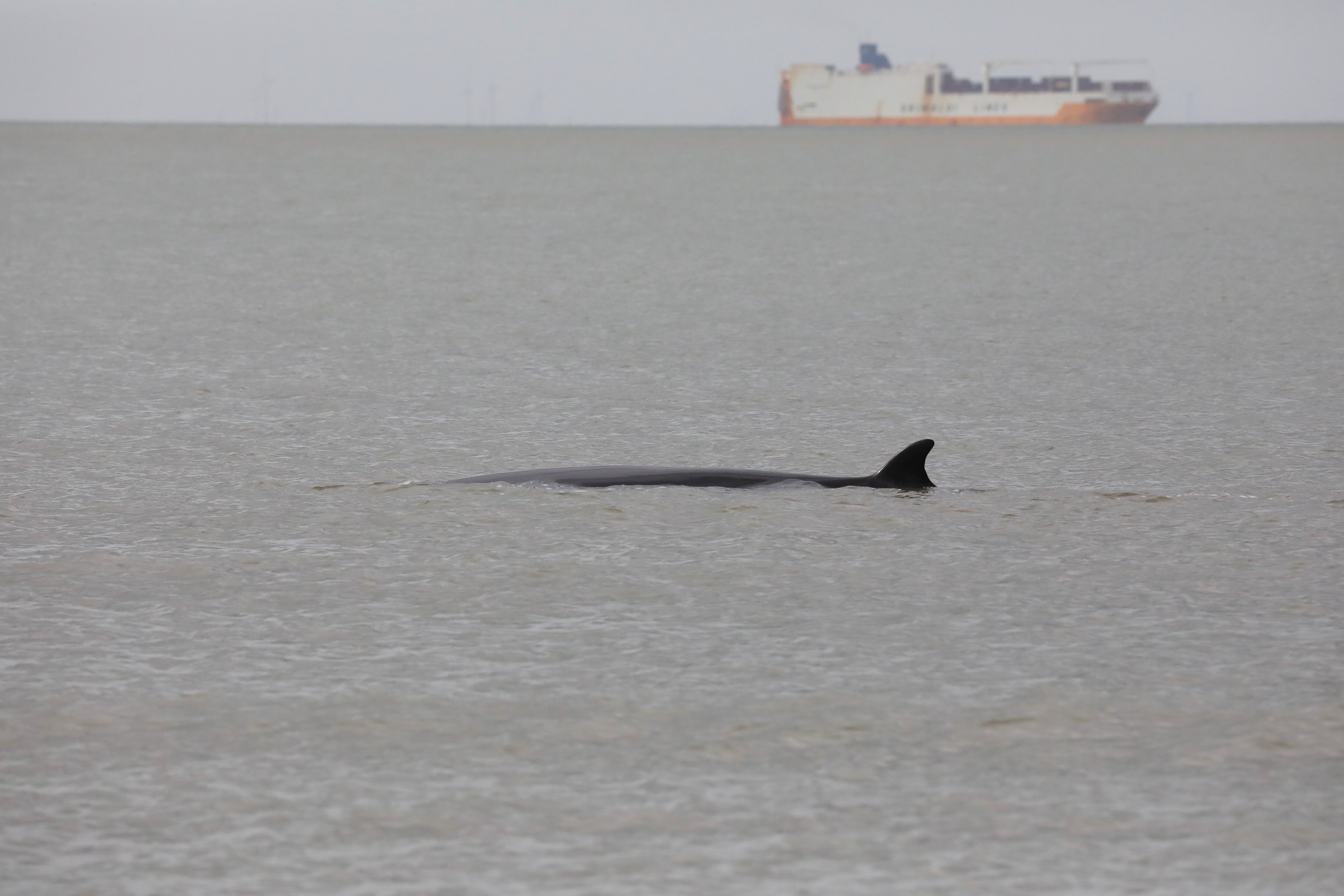Minke whale washed ashore in Heist guided back to sea

A minke whale, approximately 6 meters long, ran into trouble in the shallows of Heist Bay on August 31st. Lifeguards and emergency services kept the animal wet in an improvised shallow pool for hours, and a quickly dug channel allowed the whale to be guided back to sea as the tide rose. Although the animal returned to shallow water twice more, they succeeded in guiding it deeper each time. However, doubts remained about the chance of survival.
On Sunday, August 31st, a minke whale (Balaenoptera acutorostrata) ran into trouble off the Belgian east coast. Just before noon, the animal ended up in the treacherous shallows of Heist Bay, and as the tide receded, it was completely exposed.
Reducing the pressure of weight
Lifeguards worked all afternoon to rescue the unfortunate minke whale. They built a wall of sand around the animal and kept it wet in a shallow pool. It's important that a cetacean on dry land is supported as much as possible to reduce the pressure of its own weight on its organs. Even a water depth of just 25 cm is better than simply lying dry.
The minke whale, approximately 6 m long and estimated to weigh 4 tons, remained relatively calm. The animal was very alert, its eyes constantly darting in all directions. Only occasionally did it swat its tail or open its mouth, briefly revealing its perfectly aligned cream-colored baleen. The minke whale otherwise appeared healthy: it seemed well-fed, its skin was perfectly intact, and it carried few parasites.

Lend a hand to the rising tide
Marine biologists from the Institute of Natural Sciences advised on appropriate actions. A municipal bulldozer was used to dig a small canal: by deepening the shortest route to the sea, the animal could return more quickly with the rising tide.
The lifeguards, along with several firefighters, a veterinarian, and a few volunteers, remained in the water for hours, initially knee-deep, but later waist-deep as the tide rose. Finally, around 4 p.m., they were able to guide the animal through the deepened channel to deeper water. After swimming back and forth for about an hour and a half further out to sea, the animal returned to shore twice. Each time, the minke whale became stuck in shallow water, but was quickly pushed back. The animal was last seen in the evening.


Continued vigilance
Shortly after the last action, the animal disappeared underwater near the coast. The minke whale was not seen again in the last hours before nightfall. This is somewhat strange, as a cetacean that experiences stress during strandings and exerts itself physically in attempts to free itself is expected not to immediately dive deeply, but to remain at the surface to breathe regularly. Moreover, deep diving is not possible in the shallow Bay of Heist.
Prompted by the repeated return of the minke whale to coastal waters, but also mindful of the possibility of a carcass washing ashore, the emergency services and the Institute of Natural Sciences remained vigilant in the hours that followed. On Monday, September 1st, when two more low tides had already occurred and no more minke whale was found—dead or alive, the final alert was called off shortly after noon.


Successful Rescue?
While August 31st was a wonderful end to the summer season for the lifeguards – a team-building exercise they will never forget, and the many others who contributed (including the fire brigade, police, technical service, the veterinarian, and several volunteers) also deserve praise, fears about the future fate of the Belgian minke whale now appear to be well-founded.
On Friday evening, September 5th, a dead minke whale washed ashore in Katwijk, the Netherlands. This animal, too, was approximately 6 meters long and turned out to be a male. The carcass was taken to Utrecht University. Based on a detailed comparison of photographs of the Heist minke whale and the Katwijk carcass, the Dutch and Belgian researchers concluded that the animals at both locations were the same. A scar on the left flank, among other things, was decisive.
This conclusion was reinforced by a reconstruction of the dead minke whale's trajectory in the days before it washed ashore. This "back-in-time" simulation, based on a scientific model in which currents play a key role, was performed by the Institute of Natural Sciences. The model brought the minke whale remarkably close to the location where it was last seen on August 31st. This result also indicates that the animal likely died shortly after its last sighting off the Belgian coast, as a living whale would not simply be carried along by the currents.
Minke whales remain rare in Belgium. For an overview of the most recent strandings and sightings in Belgium, please refer to the 2024 marine mammal report (available in Dutch and French) and a web article about a young minke whale that washed ashore in Ostend in 2024.